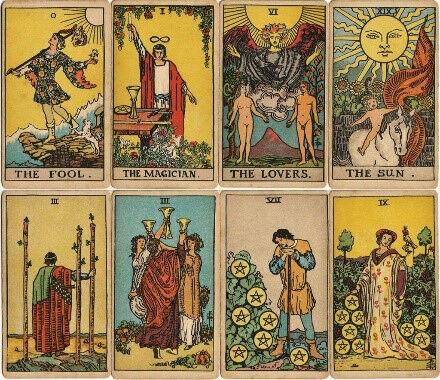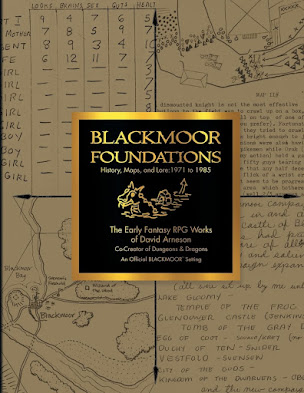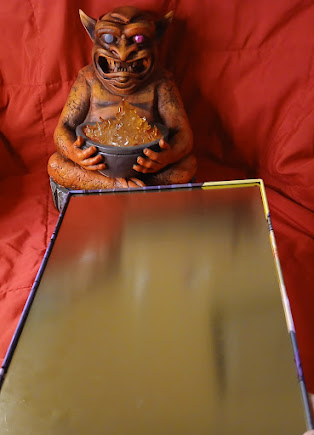 |
Cover of Mirkwood Tales, 1977, by Eric S. Roberts |
"As far as I know, Willie Crowther of Stanford University wrote the first fantasy simulation game. Don Woods added several features and expanded the dungeon to produce the current ADVENTURE game. Tim Anderson and Dave Lebling of MIT built on the Adventure game by using a more powerful computer language and including some ideas from D&D (Dave Lebling plays it). With help from two other users they came up with ZORK, sometimes called DUNGEON."
"ADVENT: Willie Crowther was at BBN (Bolt-Beranek and Newman - Massachusetts) when he wrote the original Adventure program. He was inspired by a Middle-Earth offshoot called Mirkwood Tales. Neither Willie nor Don appear to have drawn any ideas from the D&D rules in building Advent. Don Woods doesn't play any RPG games.""The original program by Willie Crowther was much less complex than Don Wood's current version, and the dungeon was only about half its current size.""Don Woods also provided a short genealogy of these games: war games, D&D, Mirkwood Tales, Adventures (original), Adventure (Don dropped the 's' from the name of his version), Zork."
"Dave Walden, who had been a programming ace working under Crowther at BBN, got his introduction to the game one night in 1975, when Eric Roberts, a student from a class he was teaching at Harvard, took him to a D&D session. Walden immediately rounded up a group of friends for continued sessions. Roberts created the Mirkwood Tales, an elaborate version of Dungeons and Dragons set in J.R.R. Tolkien's Middle Earth. The game stretched on for the better part of a year and was played mostly on Walden's living room floor. One of the regulars was Will Crowther. Where the dozen other players chose names like Zandar, Klarf or Groan for their characters, Crowther was simply Willie, a stealthy thief."
"Mirkwood Tales is a game of stratified progression, where characters accumulate experience points while adventuring and go up in level as they reach certain experience totals. It moreover relies on underworld exploration, combat and treasure to drive an engaging narrative. In all those respects, it very closely follows the precedent of Dungeons & Dragons" (page 617).
Later in the section, Peterson reveals that Dave Lebling, one of the developers of Zork, also played in Roberts' Mirkwood Tales campaign (page 622).
(Note: The 2012 edition of Playing at the World is out of print, and is being republished in a two-volume edition; the first volume is already out but does not contain the above material).
"It isn’t like Crowther was trying to “adapt Dungeons and Dragons” entirely — this is not an RPG, and nearly every room has an analogue in the real cave — but there’s still clearly some flavor of Crowther’s world found in the campaign he participated in, with the treatment of magic, direct reference to the computer as the “eyes” of the player, and heavy emphasis on dwarves (if a bit more aggressive in this game)"
"In addition to spells, magic appears in the Mirkwood Tales in the form of magical artifacts and equipment. More often than not, the magical effect of some object will not be clear from simple examination of the object, and it may require experimentation or searching for further clues to its nature" (The Mirkwood Tales, page 21, section "3.5.3 Magical Artifacts")
Adventure, in turn, requires the player to experiment to figure how out how to use magic such as items or words. The first magic item encountered in Adventure is the "the iconic three foot black rod with a rusty rod", which has two different properties in the game, and "the experience of fiddling with the rod — and finding two effects, both positive and negative — are similar to OD&D campaigns", per Dyer.
The Mirkwood Tales rules mostly rewrite the first volume of OD&D, Men & Magic, with some material from Vol 3, including a much longer Example of Play. The subject matter of Vol 2 is almost entirely missing; there are no lists of monsters or treasure. If I find time in the future I will take a closer look at how the Mirkwood Tales RPG rules differ from OD&D.























